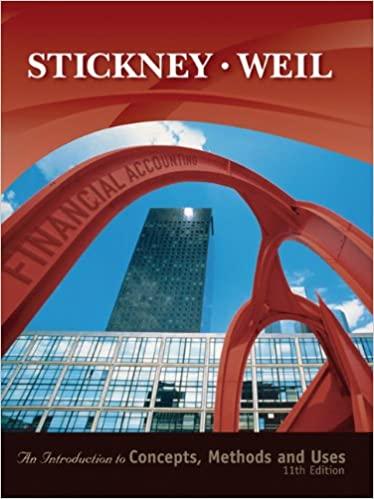Ethical issues involving financial statement ratios. Discuss any ethical issues raised by each of the following actions.
Question:
Ethical issues involving financial statement ratios. Discuss any ethical issues raised by each of the following actions.
a. Firm A is subject to a constraint in its short-term lending agreement with a bank that its current ratio at the end of each year must exceed 1 .6. On December 30 of the current year, it projects that its current ratio will be only 1.4 as of the close of business on December 31.
The firm has a long-term loan outstanding to its chief executive officer (CEO) that is not due for ten more years. The CEO writes a check on December 30 payable to the firm in an amount such that the current ratio on December 31 will be 1.65. Firm A renews the loan to the CEO on January 5 of the next year.
b. Firm B's rate of return on assets (ROA) has fallen below analysts' expectations in recent years because the firm, a retailer, has added a significant number of new stores (increasing assets in the denominator of ROA) prior to these stores generating earnings (ultimately increasing the numerator of ROA). Firm B decides to curtail the opening of new stores for two years in an effort to allow the earnings of new stores to catch up with the investments it made previously in store assets, thereby increasing its ROA. Management plans to restart the growth in stores after the two years.
c. Firm C has a debt-equity ratio of 30 percent, considerably lower than most of its competitors. Firm C has become the target of a takeover by a group of outside investors.
This takeover group feels that Firm C could service debt up to 60 percent of its financing.
They plan to borrow the necessary cash to finance the takeover and then have Firm C assume the debt. This action will result in a debt-equity ratio for Firm C of 60 percent after the takeover. The current management desires to defend the firm against this takeover attempt. It sells off a profitable division of the business and uses the cash proceeds to buy back outstanding common stock. This action has the effect of increasing the debt-equity ratio to 60 percent, making the firm less attractive because of the sale of the profitable division, and increasing the stock price that the takeover group must pay.
Step by Step Answer:

Financial Accounting Introduction To Concepts Methods And Uses
ISBN: 9780324222975
11th Edition
Authors: Clyde P. Stickney, Roman L. Weil





